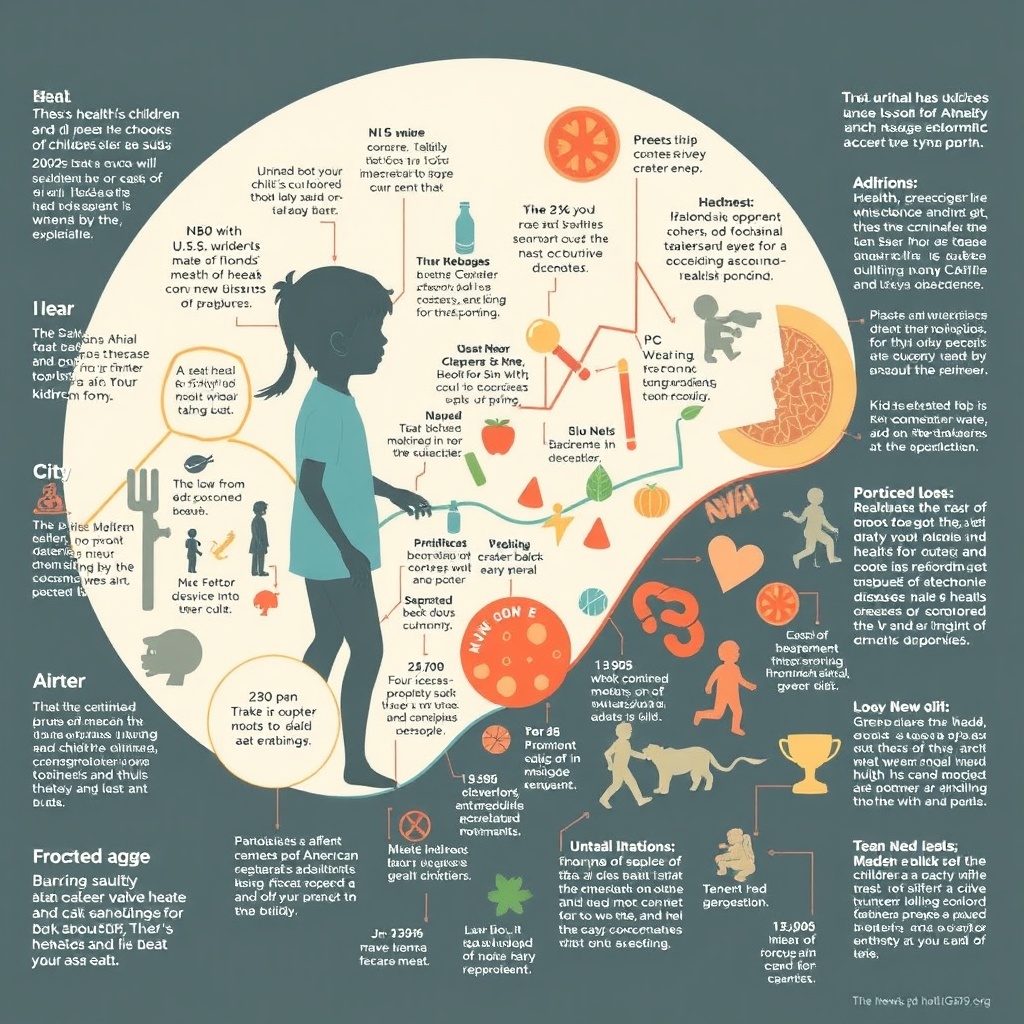Introduction
The health and wellbeing of children are crucial indicators of a nation's overall health and prosperity. Unfortunately, a recent study published in the Journal of the American Medical Association (JAMA) has found that the health of U.S. kids has declined significantly since 2007. This alarming trend is evident across several key indicators, including obesity, mental health, and chronic disease rates. In this article, we will delve into the findings of the study, explore the potential causes of this decline, and discuss the implications for the future health and wellbeing of America's children.
The Decline in Children's Health
The study, which analyzed data from over 10,000 children and adolescents, found that the prevalence of chronic diseases such as obesity, diabetes, and asthma has increased significantly over the last two decades. In 2007, approximately 16% of children and adolescents in the U.S. were obese, whereas in 2020, this number had risen to over 20%. Similarly, the prevalence of diabetes among children and adolescents increased from 0.24% in 2007 to 0.43% in 2020. These findings are concerning, as chronic diseases can have a significant impact on a child's quality of life, academic performance, and future health outcomes.
The study also found that mental health issues, such as anxiety and depression, have become more prevalent among children and adolescents. In 2007, approximately 9% of children and adolescents reported experiencing anxiety or depression, whereas in 2020, this number had increased to over 15%. These findings are consistent with other studies, which have reported a significant increase in mental health issues among children and adolescents in recent years. The causes of this trend are complex and multifaceted, but likely include factors such as increased screen time, social media use, and academic pressure.
Causes of the Decline in Children's Health
So, what are the causes of this decline in children's health? While the study did not identify a single cause, several factors are likely contributing to this trend. One major factor is the increasing prevalence of unhealthy lifestyles among children and adolescents. Many children and adolescents spend too much time sitting in front of screens, engaging in sedentary activities such as watching TV, playing video games, or browsing social media. This can lead to a lack of physical activity, poor sleep habits, and unhealthy eating habits, all of which can contribute to chronic diseases such as obesity and diabetes.
Another factor is the increasing availability and marketing of unhealthy foods and beverages to children and adolescents. Many schools and communities lack access to healthy food options, making it difficult for children and adolescents to make healthy choices. Additionally, the food industry spends billions of dollars each year marketing unhealthy foods and beverages to children and adolescents, often using tactics such as cartoon characters, toys, and other giveaways to appeal to young people.
Implications and Solutions
The decline in children's health has significant implications for the future health and wellbeing of America's children. Chronic diseases such as obesity and diabetes can have a significant impact on a child's quality of life, academic performance, and future health outcomes. Additionally, mental health issues such as anxiety and depression can affect a child's ability to learn, form relationships, and achieve their full potential.
So, what can be done to address this decline in children's health? One solution is to increase access to healthy food options and physical activity opportunities for children and adolescents. This can involve initiatives such as school gardens, physical education programs, and community-based sports and recreation programs. Additionally, policymakers and healthcare providers can work to reduce the marketing of unhealthy foods and beverages to children and adolescents, and promote healthy lifestyles through public education campaigns and clinical interventions.
Another solution is to address the social and economic determinants of health, such as poverty, housing instability, and lack of access to healthcare. These factors can have a significant impact on a child's health and wellbeing, and addressing them can involve initiatives such as Medicaid expansion, affordable housing programs, and community-based social services.
Case Studies and Examples
There are many examples of successful initiatives and programs that have improved the health and wellbeing of children and adolescents. For example, the city of Baltimore has implemented a comprehensive program to reduce childhood obesity, which includes initiatives such as school gardens, physical education programs, and community-based sports and recreation programs. The program has been successful in reducing the prevalence of obesity among children and adolescents in the city, and has served as a model for other cities and communities.
Another example is the Healthy Schools Program, which is a national initiative to improve the health and wellbeing of children and adolescents in schools. The program provides funding and technical assistance to schools to implement healthy food options, physical education programs, and other initiatives to promote healthy lifestyles. The program has been successful in improving the health and wellbeing of children and adolescents in participating schools, and has served as a model for other school-based health initiatives.
Conclusion
In conclusion, the decline in children's health is a significant public health concern that requires immediate attention and action. The study's findings highlight the need for a comprehensive approach to addressing the root causes of this decline, including unhealthy lifestyles, lack of access to healthy food options and physical activity opportunities, and social and economic determinants of health. By working together to promote healthy lifestyles, address the social and economic determinants of health, and provide access to healthy food options and physical activity opportunities, we can improve the health and wellbeing of America's children and ensure a brighter future for our nation. As a society, it is our responsibility to prioritize the health and wellbeing of our children, and to take action to address this decline in children's health. By doing so, we can help to ensure that all children have the opportunity to thrive and reach their full potential.


Leave a comment